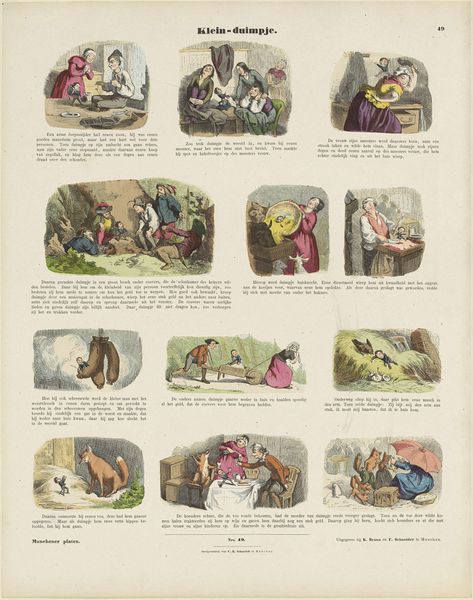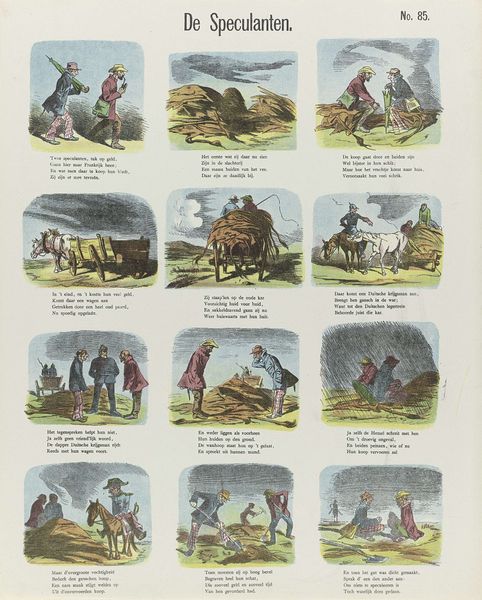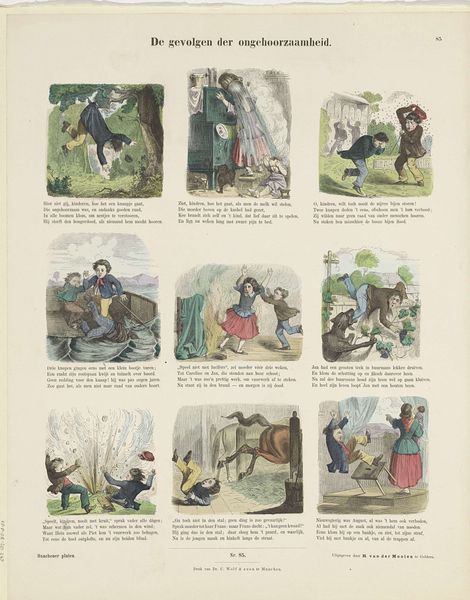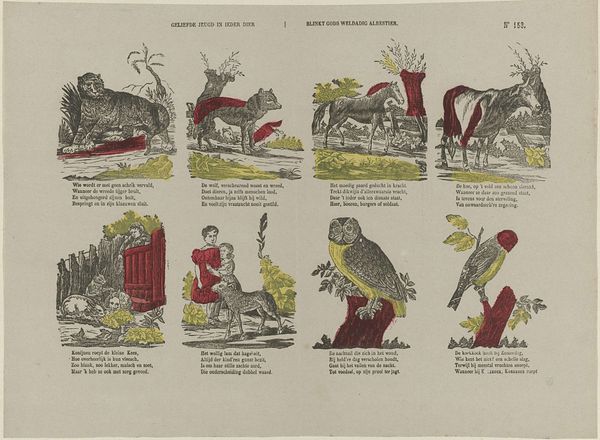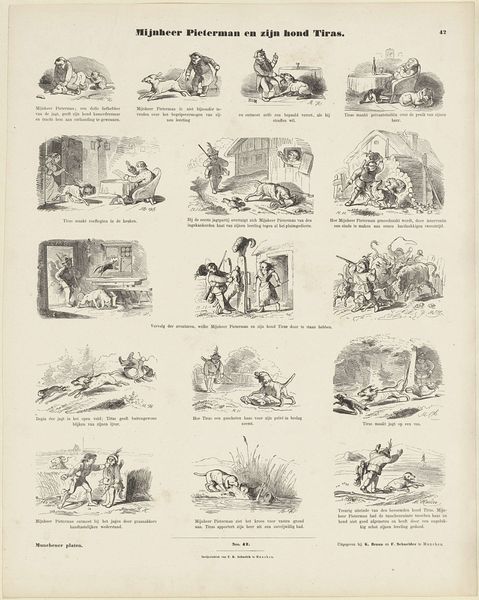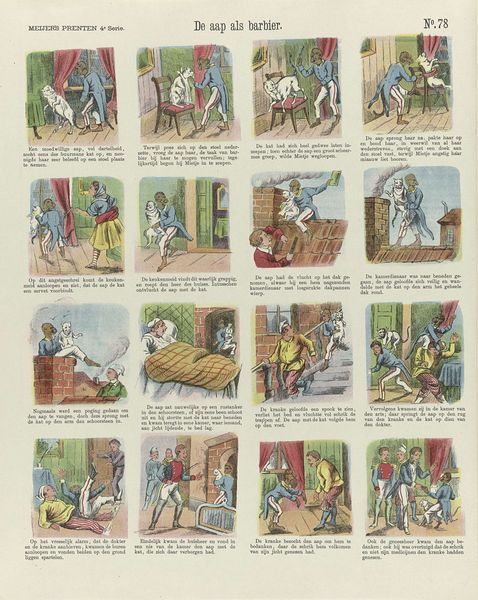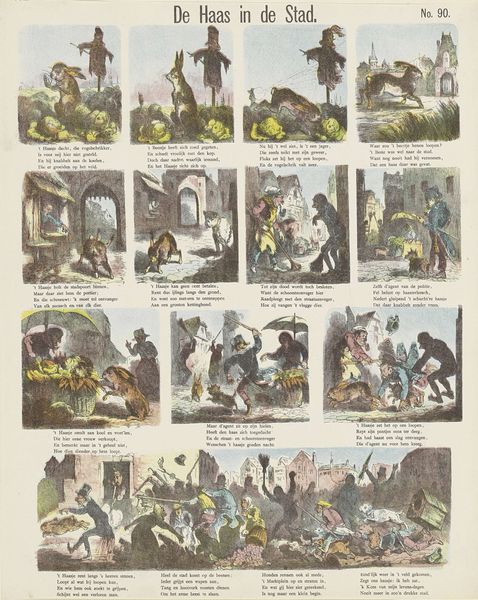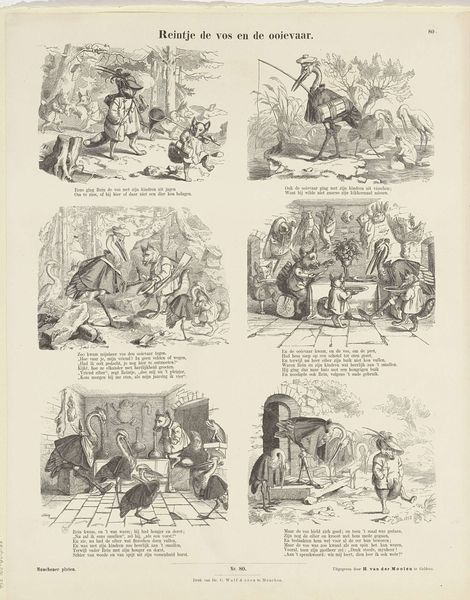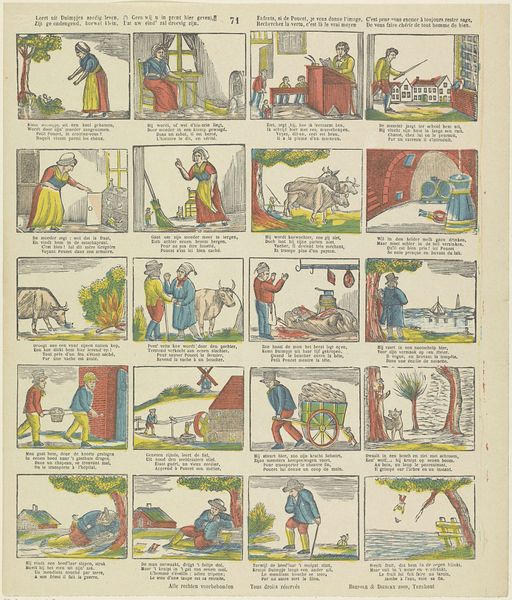
#
child-oriented illustration
#
narrative-art
# print
#
folk-art
Dimensions: height 430 mm, width 346 mm
Copyright: Rijks Museum: Open Domain
Curator: This print, “Fabelen,” from 1874 by De Ruyter & Meijer, really stands out. There’s a fascinating visual rhythm created by the grid arrangement. The artwork utilizes such playful imagery! It’s almost like a series of Dutch morality tales or fables for children, perhaps reminiscent of Aesop's Fables. What do you see here? Editor: I noticed that the figures are dressed up, anthropomorphic, and are set against fairytale backgrounds, seemingly enacting scenarios or vignettes, similar to panels from graphic novels today. Is that typical for prints made at this time? Curator: Absolutely. Placing humans and human societies within imagined animals is a means to interpret and, indeed, judge the culture one lives in. This type of imagery wasn't uncommon as popular culture at the time grew alongside expanding printmaking technologies that made mass-market accessibility a reality. This access arguably began to threaten the status quo, and the dissemination of new value systems had some worried that art could replace the conventional educational spaces like schools or the Church, though clearly these kinds of pictures still reinforced social codes and values. What do you make of the different roles ascribed here to these beings? Editor: Well, seeing a swan dressed in a ballgown next to a penguin in a suit is quite amusing, like characters pulled straight from a child’s imaginative play. How was this art distributed? Was it for children’s books? Curator: Very likely. These were produced as illustrations for books, but perhaps even distributed as individual prints for educational use at home. This kind of easily accessible imagery played an important role in how moral values were disseminated and interpreted during the industrial era. Looking closely at all of the stories within one page is truly revealing about that period's culture and attitude toward societal concerns. Editor: I've certainly never considered popular media and prints as active tools in culture. Looking at the images this way really opens my eyes to a whole new world of art history. Curator: Indeed, seeing these "Fabelen" as tools to reflect upon the power of the art world gives us valuable information about culture at large.
Comments
No comments
Be the first to comment and join the conversation on the ultimate creative platform.
